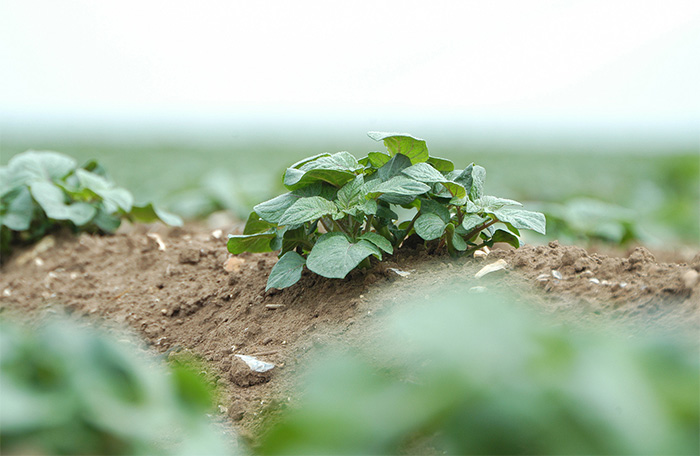
Many potato crops are now emerging well - straight into conditions that pose a high risk of blight. There is a ‘perfect storm’ of blight risk building up, warned Syngenta Field Technical Manager, Simon Laidler.
Blight attacks are already believed to have hit unsprayed crops grown under plastic in the south-west and south Wales; large numbers of volunteer potatoes have survived the mild winter that would prove to be foci of infection and wet soils could allow blight spores landing on the surface to move and infect plants. Now weather forecasts of continued rain and warmer conditions that will be highly conducive to disease outbreaks could exacerbate the risks.
“This season everything appears set to hit at once and has significantly increased the risk of blight,” advised Mr Laidler. “BlightCast has already identified Smith Periods in the south west, and further high risk trigger points for much of the UK this week (13-15 May). The soft new growth of emerging crops is most susceptible to infection and will need to be protected from the outset.”
Mr Laidler pointed out that in the relatively cool weather conditions to date, blight reproduction would have tended to create more infective zoospores. Spread in the high winds sweeping across from the south-west over the weekend, zoospores have the ability to use their whiplash and tinsel flagellum to propel through soil moisture. If they come into contact with growing potatoes, plants could be infected at the most damaging early stage.
“Growers and agronomists should be looking for an initial blight spray with Shirlan to benefit from its strong zoospore activity. An application at the earliest opportunity will protect emerged growth from aerial spore infection, but targeting the soil surface also helps to counter zoospores before they have chance to move and infect plants.”
He also warned that with the risk of even just a few plants emerging that are already infected with blight, growers will need to implement the most robust programmes possible through the rapid growth phases over coming weeks – especially when any blight risk periods occur.
“Revus is going to be at the core of most programmes, to protect new growth between sprays. Growers’ experience, extensive blight trials and the Euroblight classification have all recognised Revus as the leading blight fungicide to protect new growth,” he said. “If difficult weather conditions continue to disrupt blight spray schedules, there is immense confidence in having used the longest lasting protection available.”
Mr Laidler also advocated all growers and agronomists should sign up for the free Syngenta BlightCast service on the company’s website. It provides a localised five-day forecast of blight risks to help with appropriate product choice and spray interval timing, along with a spray window forecast to help tailor application scheduling and ensure crops remain protected.
